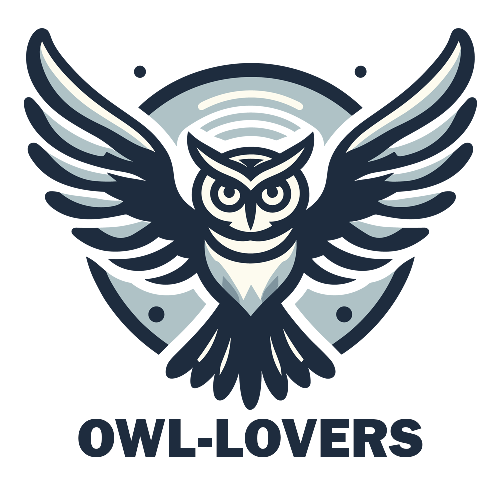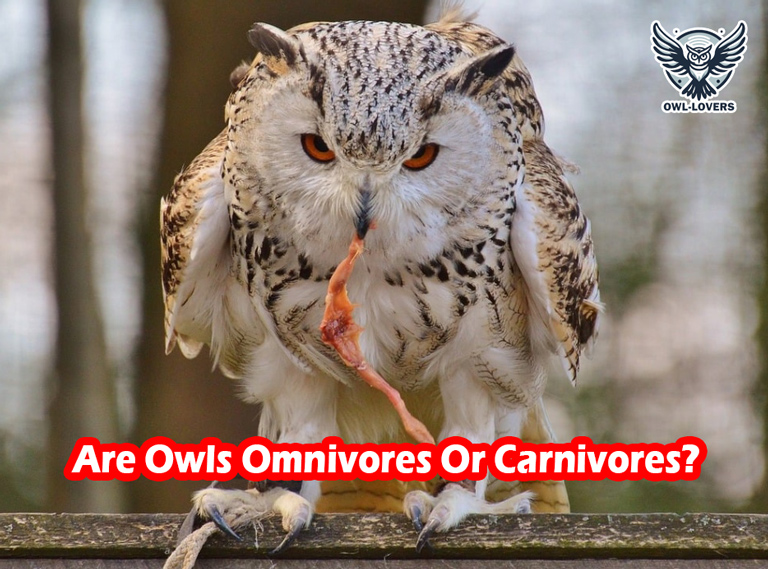Blog
Are Owls Omnivores Or Carnivores?
Despite the tales and the symbols of luck, fortune, and strength that owls are closely attached to, here is the truth: Owls are not omnivores. They don’t feed on herbs and plants, hence they are purely carnivores.
From the earth and the water to the sky, owls have a great appetite for fowls, rodents, birds, fish, and even reptiles. The physical features and the environmental adaptations make them exceptional hunters.
Without further ado, let’s dig deeper into their fascinating diet and learn how biologists have figured it out.
Owls Are Not Omnivores
Omnivores are animals with a variety in their diets, including both animals and plants. Furthermore, they have a digestive system capable of handling all the food they consume.
The clear and short answer for you is: Owls are carnivores, not omnivores. Except for scarce situations wherein they eat a little bit of herbs, meat is predominant in the owls’ diet.
In adaptation to this lifestyle, owls have the necessary features to hunt, catch, and eat their prey. Some of them have minor differences in their habits.
The popular Snowy Owls you have heard about are nowhere near omnivores. They are opportunists with a wide variety of prey, especially during winter.
- Snowy Owls hunt rodents mostly, though prey of larger sizes are not entirely off the hook.
- At times, they will also catch fish for food.
- With small prey, Snowy Owls often swallow them all and spit out the parts they cannot digest.
On the other hand, Great-Horned Owls actively hunt at night but also during the day.
- Small animals like rabbits, mice, rats, and even skunks are included in these owls’ diet.
- They can catch something as big as hawks and ducks if given the right opportunities.
The examples can go on and on, but every scientific source agrees that owls are raptors, meaning they hunt, grasp, and tear their prey with their powerful talons. They are not made as herbivores and this fact will never change.
Love Owl? Check now: Owl Toys Collection
How Do We Know Owls Are Carnivores Only?
We rely on the digestive system of owls – a glandular stomach and a gizzard – to learn more about the kind of food that owls can consume for survival.
The food owls eat will go straight to the glandular stomach, where it will be broken down into smaller components by the enzymes. Afterward, the gizzard will act like a grinder and digest these parts for nutrients.
Here is the cringe-worthy but also cool part: the pellets.
Owls have no teeth to bite and chew, hence they mostly swallow large chunks or the whole of their portions. The indigestible part of the meal is compressed and packed into a mass called a “pellet”.
It will stay in the owl’s proventriculus and then regurgitate. Depending on the species and the food, the pellet of an owl changes too. Scientists utilize this to learn about its diet and the ecosystem.
In owl pellets, biologists usually find bones, fur, feathers, and other components that we would deem non-consumable. The sizes and the shapes are not consistent, but none of them ever disclosed hints about a diet with vegetables and fruits.
With technology, scientists can identify the prey based on the skulls and the hairs in the pellet. They even managed to recreate a diet of the Great Barn Owls, which are now listed as endangered species.
Diet Of Owls
Many kinds of animals, even fellow owls, can be a good meal for our aggressive owls. Here is a detailed list of what they would love to eat.
- Rodents: Mice, rats, squirrels, and voles are what we are talking about. Owls would even prioritize them.
- Insects: Screech owls and Elf owls are smaller than most, hence they have better chances with beetles, grasshoppers, moths, and other tiny creatures.
- Reptiles & Amphibians: Barred owls are known for hunting down frogs, lizards, and snakes.
- Birds: Eurasian Eagle Owls and Great-horned Owls are large-sized hunters that can chase and catch healthy birds.
- Bats: Bats might be a force to be reckoned with in the night sky, but they are quite vulnerable to owls. Western Screech Owls are a prominent example of this case.
- Crustaceans: Crayfishes and similar creatures might also be included in the Eastern Screech Owls’ diet.
- Fish: Even fish are not safe from owl talons. Fish Owls prefer fish more than anything, so any unlucky fish swimming near the surface might be in danger.
When food sources decrease, most owl species won’t say no to carcasses. Most of the documentaries on owls feeding off dead animals are deeply related to sustenance rather than appetite.
Half of the documented evidence is recorded during winter, when owls have a hard time looking for food. If owls take carcasses in the summer, they are likely to be in the breeding phase.
Owls Are At The Top Of The Food Chain
Although owls are far from the biggest or strongest animals, they have extremely sharp senses and accurate attacks that put them at the top of the food chain.
Owls have extremely good eyesight, suitable for nocturnal life. They can also hear and sense motions from a quite far distance, which gives them another advantage over their prey.
What makes them formidable is the power of their talons. They can stretch these talons much more broadly than you can imagine, strike, and capture the prey without sparing them a second chance.
They have enemies, though it wouldn’t change their position as excellent and cunning predators.
The Takeaways
Owls are not omnivores because their primary diet covers a wide range of mammals, birds, and fish. There are exceptions with owls eating plants and carrion, but they are uncommon and certainly not enough for us to categorize owls as omnivores.
If you want to share more about the physical and behavioral adaptations that have made owls such skilled hunters or any related matters, don’t hesitate to leave a comment and start a discussion with Owl Lovers Store!

